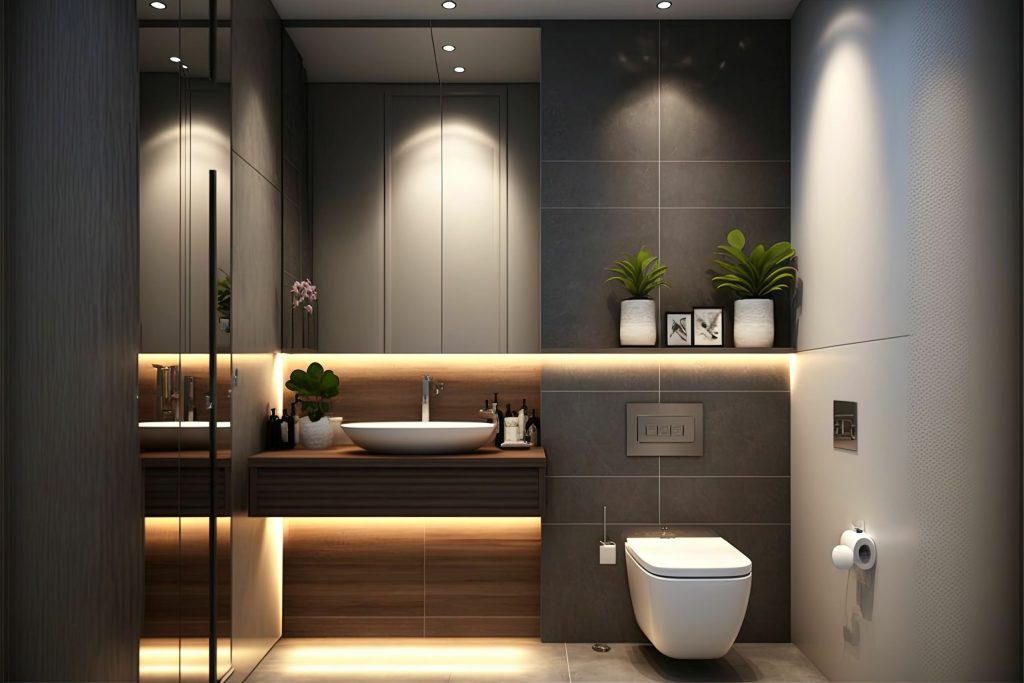In an era where health and hygiene are paramount, washroom cleanliness has transitioned from being an afterthought to a cornerstone of public and private spaces. Today, organizations across industries recognize that maintaining clean, hygienic washrooms is critical not only for health and safety but also for customer satisfaction, employee morale, and brand reputation.
With advancements in technology, sustainability practices, and heightened hygiene awareness post-COVID-19, smart washroom solutions are leading the charge in redefining cleanliness standards.
Why Washroom Hygiene Matters More Than Ever
Washrooms are among the most frequently visited spaces in offices, malls, airports, healthcare facilities, and hospitality settings. Poorly maintained washrooms leave a lasting negative impression and, more importantly, pose significant health risks by facilitating the spread of germs, bacteria, and viruses.
Key Benefits of Superior Washroom Hygiene
- Health Protection: Reduces the transmission of infectious diseases in high-traffic areas.
- User Experience: A clean washroom enhances customer satisfaction, whether in a workplace, hotel, or shopping mall.
- Brand Integrity: Organizations showcasing a commitment to cleanliness bolster their image as responsible and customer-focused entities.
- Employee Productivity: For workplaces, hygienic washrooms contribute to overall employee well-being, reducing absenteeism caused by illness.
Emerging Trends in Washroom Hygiene
The landscape of washroom hygiene is evolving rapidly, driven by technological innovation, user expectations, and sustainability goals.
Contactless Technologies for Maximum Hygiene
Touchless systems are now a staple in modern washrooms, minimizing the need for direct contact and reducing the risk of contamination.
- Automated Soap Dispensers: Delivering precise amounts of soap without requiring touch.
- Sensor-Activated Faucets: Ensuring hands-free water flow while conserving water.
- Touch-Free Flush Systems: Enhancing user convenience and preventing the spread of germs.
- Automated Doors: Eliminating the need for manual door operation, especially in high-traffic areas.
IoT-Enabled Washroom Management
The Internet of Things (IoT) has revolutionized the way washrooms are maintained and monitored.
- Smart Sensors: Collect real-time data on foot traffic, supply levels, and air quality to optimize cleaning schedules.
- Predictive Maintenance: Detecting issues like leaks, clogged drains, or low consumables to prevent service disruptions.
- Data Analytics Dashboards: Providing actionable insights for facility managers to improve washroom efficiency and cost-effectiveness.
Eco-Friendly Washroom Solutions
Sustainability is a top priority, and washroom hygiene is no exception. Modern solutions are designed to minimize environmental impact while maintaining the highest standards of cleanliness.
- Water-Saving Fixtures: Low-flow faucets, aerated showerheads, and dual-flush toilets that conserve water.
- Biodegradable Cleaning Products: Replacing harsh chemicals with eco-friendly alternatives.
- Recycled Paper Products: Using environmentally sustainable paper towels and tissues.
- Solar-Powered Lighting: Integrating renewable energy sources to power washroom lighting systems.
Enhanced Air Quality Systems
Odor control and air quality are integral to the perception of a clean washroom. Smart air quality systems ensure a pleasant and hygienic environment by:
- Using HEPA Filters: Capturing airborne contaminants and improving ventilation.
- UV Sterilization Technology: Eliminating harmful pathogens in the air.
- Aromatherapy Integration: Infusing subtle, pleasant fragrances for an enhanced user experience.
The Role of Smart Washroom Solutions in Modern Hygiene Standards
The integration of smart solutions in washroom hygiene is not just about technological innovation—it’s about creating a seamless experience that prioritizes user safety, operational efficiency, and sustainability.
Streamlining Cleaning Operations
Smart systems provide facility managers with critical data, allowing them to schedule cleaning and maintenance activities efficiently. For example, sensors can alert staff when soap dispensers or toilet paper rolls need refilling, reducing downtime and ensuring consistent user satisfaction.
Enhancing User Comfort and Safety
Modern washrooms prioritize user-centric designs. Touchless systems, superior air quality solutions, and well-stocked supplies all contribute to an improved and hygienic experience.
Reducing Operational Costs
Although smart solutions require an upfront investment, the long-term savings are significant. From conserving water and energy to reducing manual labor costs, businesses can optimize their washroom operations while maintaining high cleanliness standards.
Ensuring Compliance with Hygiene Regulations
Many industries, such as healthcare and food service, are subject to strict hygiene regulations. Smart washroom solutions make it easier to meet and exceed these requirements by providing automated documentation and reporting features.
Industries Leading the Way in Smart Washroom Adoption
Corporate Offices
Forward-thinking organizations understand that employee satisfaction and productivity are closely linked to workplace amenities, including washroom hygiene.
Hospitality and Retail
Hotels, restaurants, and malls prioritize premium washroom facilities to attract and retain customers. A clean and modern washroom reflects the establishment’s overall quality.
Healthcare Facilities
Hospitals and clinics require the highest hygiene standards to prevent the spread of infections. IoT-enabled systems and advanced cleaning technologies are essential for meeting these demands.
Educational Institutions
Schools and universities, especially post-pandemic, are investing in better hygiene solutions to protect students and staff.
The Future of Washroom Hygiene
The washrooms of tomorrow will combine technology, sustainability, and user-centric design in unprecedented ways. Innovations on the horizon include:
- AI-Driven Maintenance Systems: Leveraging artificial intelligence to predict usage trends and optimize resources.
- Self-Cleaning Surfaces: Using advanced materials that repel dirt and sanitize themselves.
- Voice-Activated Fixtures: Further reducing the need for physical contact.
- Integrated Feedback Mechanisms: Allowing users to rate their experience and report issues in real-time.
Conclusion
The evolution of washroom hygiene is a testament to the growing emphasis on health, sustainability, and technology in our daily lives. Smart solutions are setting new benchmarks for cleanliness, convenience, and efficiency, transforming washrooms from functional spaces into hubs of innovation.
Organizations that embrace these trends not only ensure the safety and satisfaction of their users but also position themselves as leaders in a health-conscious and environmentally aware world. By investing in advanced washroom hygiene solutions, businesses can make a lasting impact—one clean washroom at a time.
